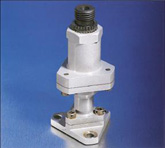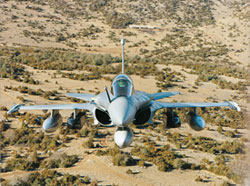Automatic Reservoir Bleed (ARB) Valve
Air causes problems if it is present in pressurised hydraulic systems.
Normally, the maintenance ground crew purges the air from the hydraulic system using bleed ports conveniently located on the circuit-on the pressurized reservoir or another high point, for example.
The Pall ARB valve automatically bleeds the entrapped air or other gases from the hydraulic fluid reservoir as the system cycles through its pressure envelope.
Features
Benefits
How Does it Work?
Applications
Typical Part Numbers
- Automatic air (and other gases) bleed on each pressurization cycle.
- Fits into most existing bleed ports
- Working pressure up to 1500 kPA
- Can be designed for use with a double pressure system (i.e., one where there is a planned reduction in hydraulic pressure after take-off)
- Certified for military aircraft applications
- Optimum installation is with the valve mounted vertically in the top of the reservoir
- Improved hydraulic system performance
- Reduction of ground and in-flight aborts
- Reduced maintenance and associated costs
- Shorter aircraft turn-around and response times
- Compact & lightweight
- Easy to install
How Does it Work?
There are 3 Stages of Operation:
STAGE 1
System at Rest
- The inlet port is closed.
- A centralized piston is held in the "full down" position by a spring.
- This closes the valve and prevents any flow of air or oil.
STAGE 2
Air Bleed Phase
- As the reservoir is pressurized, trapped air or gas enters the valve through the inlet port.
- The air (gas) flows between the body and the piston to the outlet port.
- The air is then vented overboard into the atmosphere.
STAGE 3
Air Bleed Completed, System Pressurized
- When all the air (gas) is expelled, hydraulic fluid enters the valve.
- The back-pressure caused by the viscosity of the hydraulic fluid causes the piston to move up against the seat. This shuts off the outlet valve, and the air flow stops immediately and prevents leakage of the fluid.
- The valve maintains this position until the reservoir is de-pressurized, at which point the piston returns to its original position
Note that valve closure is a function of fluid viscosity and rate of pressure rise in the reservoir.
For use on pressurized hydraulic reservoirs where entrapped free air (and other gases) is a problem. The ARB valve is suitable for use in a wide range of air, land, and sea environments.
|
To determine if your application is suitable, contact your local Pall sales representative.
For ordering information, contact your local Pall Aerospace sales representative or e-mail: aerospace@pall.com.
Typical Part Numbers
For availability of specific part numbers beginning “QA0****” contact Pall Aerospace Ltd (UK).
We appreciate your review of this product. Please login to your account to leave a review.




